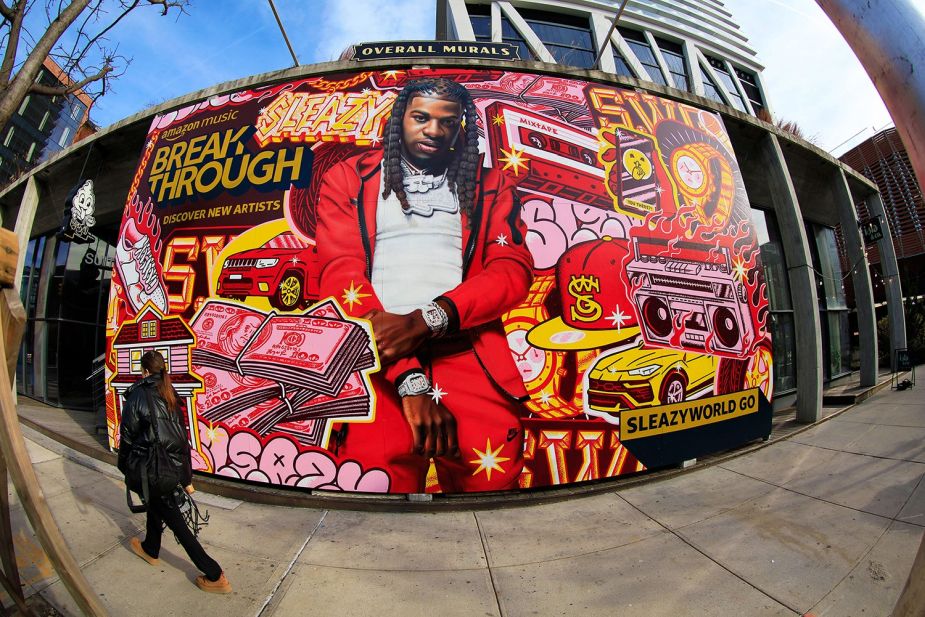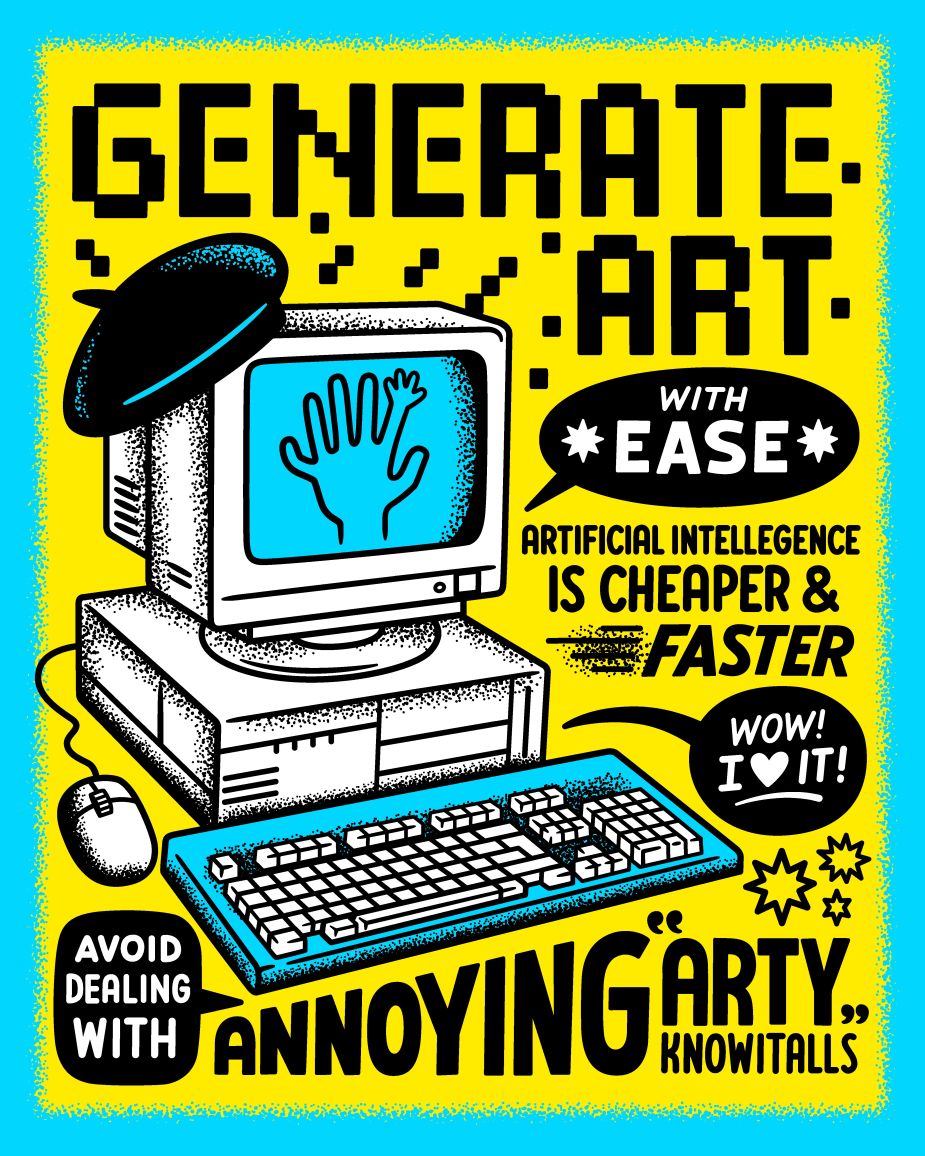
Style Guide: Justin Poulter on Finding His Own Distinct Voice

Justin Poulter is an illustrator and art director who creates visuals for some of the world's biggest brands. He has worked with highly lauded studios in both Cape Town and London, taking the lead on art and design direction for branding, animation and advertising projects.
His style is a juxtaposition of clean and messy, vibrant and gritty. Increasingly weaving in character design, his type, logo design, and illustration is often enhanced with motion through collaborations with animators. In 2014, setting up permanent residence in London, Justin went freelance where his illustration and lettering won him a number of international clients including Google, Vans, Nike, Coca Cola, Bacardi, Delta Airlines, Red Bull and Uber.
LBB> How would you describe the work that you do?
Justin> I create illustrated artwork and lettering for agencies and brands, as standalone pieces or to form part of larger campaigns. Sometimes I’ll work with animators to make that work move. Occasionally I will also work with publishing companies and magazines, creating things like cover artwork or editorial illustrations to accompany articles.
LBB> And do you have a particular style (or styles) that you like to work in? If so, how would you describe that?
Justin> I do have a personal style which I work in and which has developed over time. My style has often been described as comic book-like, but I think more broadly its graphic and punchy with a slightly retro feeling.
I’m inspired by the expressive lettering used in comic books, sign writing, old 1950s advertising and logos — as well as contemporary illustrators and graphic designers like Evan Hecox, Stephen Powers, Sean Cliver, Coop or Charles Burns.
LBB> How did you gravitate towards the particular medium you work in?
Justin> At school I always looked forward to art class. This is where I excelled and was encouraged by everyone around me the most. My background in graphic design of course has informed my work in a big way, especially when it comes to lettering and branding projects. These days, I work digitally, mostly using Adobe Illustrator. When I studied graphic design I was trained to use it and found that I was able to create the style I envisioned quicker and more accurately than before, when I was working entirely by hand.

Above, a mural commissioned by Amazon Music US for Sleazy World Go
LBB> And when you started developing your creative skills and styles, what were you inspirations and influences?
Justin> I’ve always taken a lot of influence from skateboard graphics having grown up loving skateboarding. Going into a skate shop and seeing all the board graphics, t-shirt artwork and magazine ads had a huge impact on me. Other things like album artwork, graffiti and signage later also helped train my personal taste.
LBB> How has your style evolved over time - and can you talk to us about some of the stylistic experiments or avenues you’ve explored over the years?
Justin> In high school I was taken with graffiti and street art. I tried out different traditional graffiti styles, stencilling, wheat pasting etc. At the same time I began to appreciate political cartoons in the newspaper and also rediscovered the Disney films I loved when I was a kid. I think the combination of things like the lettering from comics, the texture from graffiti and line work from early Disney have blended in my head to create my style.
LBB> And was there any one particular moment or project that really crystallised your understanding of what your style is or should be? If so, can you tell us about it?
Justin> My experience in developing my own style is that it feels like an ever-changing moving target. That’s not to say there isn’t a common thread running through all my work, but rather that it’s always developing and if it did crystallise in full clarity it might stagnate.

LBB> What sort of ideas shape your style today?
Justin> Often it’s the challenge of working with a brand that isn’t specifically aimed at me or an application of my style which I hadn’t considered. I learn things on these projects that go on to shape my process and development as an illustrator.
LBB> From NFTs to the metaverse, there are more spaces for your work to show up - what are your thoughts on the impact, challenges and opportunities brought up by these new spaces? And do they influence how you think about your style (ie. is there pressure to adapt or change your style to fit these new digital frontiers - or is it kind of exciting?)
Justin> The way I see it, NFTs and the metaverse are just more platforms to show or sell work. There might be specific artists in this space that are influential to me, but the mechanism of NFTs itself hasn’t really resonated with me in terms of influencing my style.
LBB> Working in the commercial sphere, is it more important for an artist to have a distinct brand or style? What’s the balance having a distinctive voice and being able to accommodate the visual language of the brand/campaign?
Justin> Personally I feel style is more important in the commercial sphere. Brands that commission illustration will likely have their own distinctive voice which your illustration work should help support. In an artistic sphere I think the opposite is true, where artists should have their own distinct voice in their output, whatever their style or medium is.

LBB> Typically, on a commercial project, how do you like to tackle a brief?
Justin> Usually a project begins with a written brief and a call to discuss it in more detail between the client myself and my agents, Jelly. Once we’ve all agreed on a schedule I begin working on rough sketches. I like to present at least three ideas at this stage, depending on the scope of the work. The agency or client will then feedback on the sketches, picking a direction to move forwarded with.
Before I begin working on the final illustration, ideally things like placement and composition is signed off. Then after presenting my first round of the final illustration, typically there will be some more, usually minor feedback that I try to get back as soon as possible in order to make the often tight deadlines.
LBB> What projects have you worked on recently that you feel were a really satisfying marriage between a brand and your own style? What was it about these projects that made them really interesting to work on?
Justin> I was commissioned recently by Amazon Music in the US. The brief was to design a mural to promote one of their artists, Sleazy World Go. This project was an open brief to me, and so I was able to fully embrace my stylistic impulses while being mindful of the tone of the artist and the brand. The process of having my artwork transposed by mural artists was especially interesting and exciting to me.













